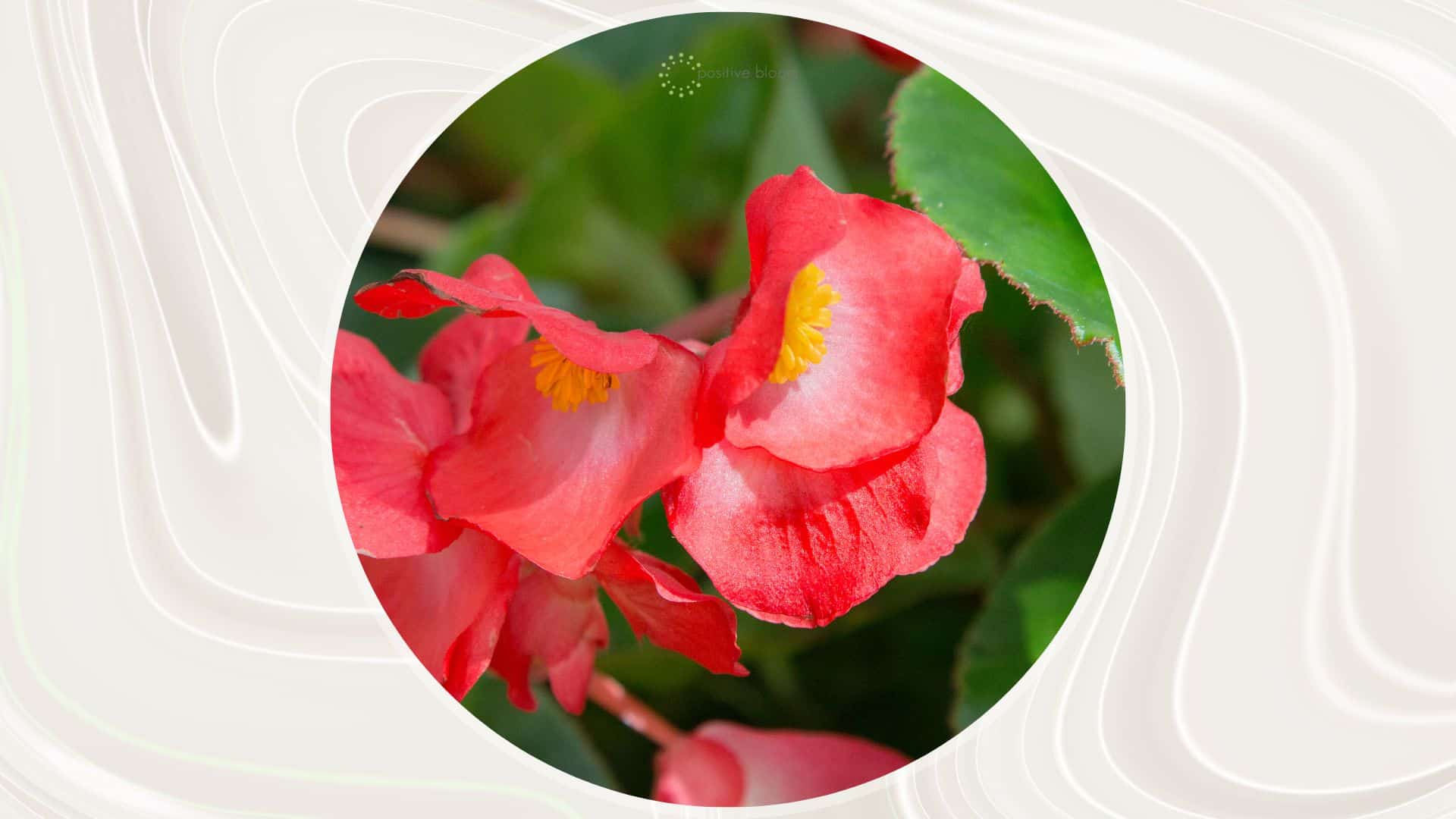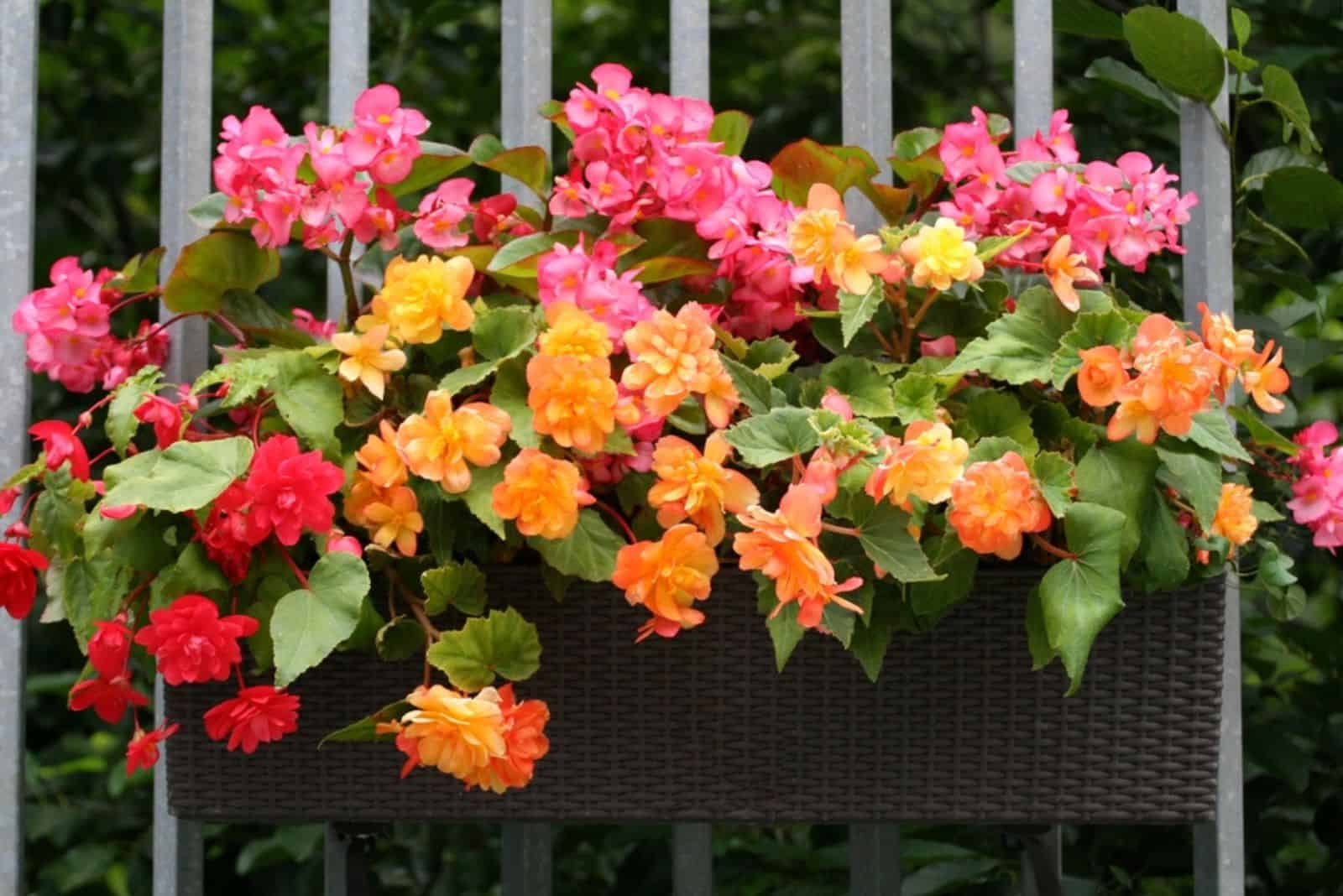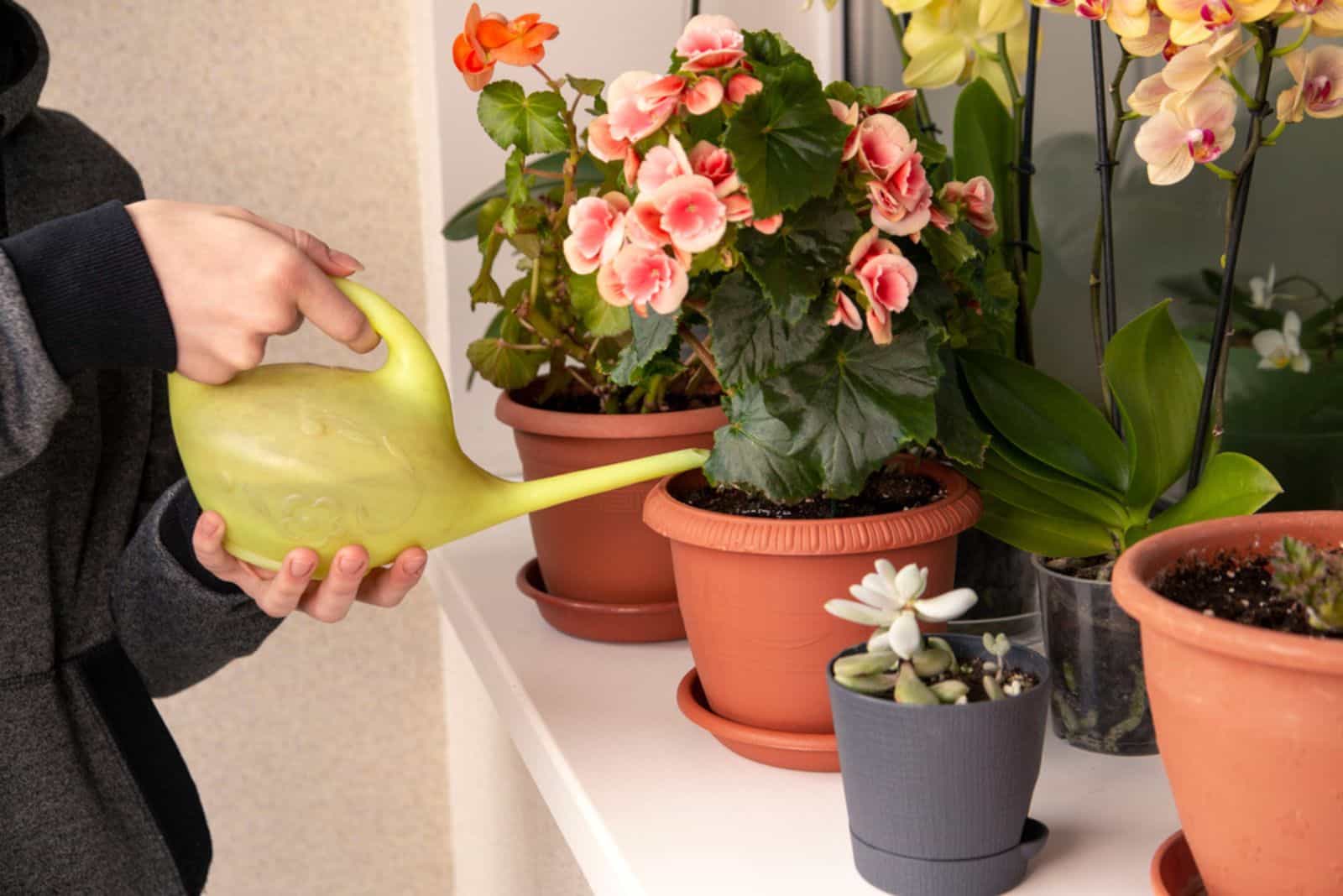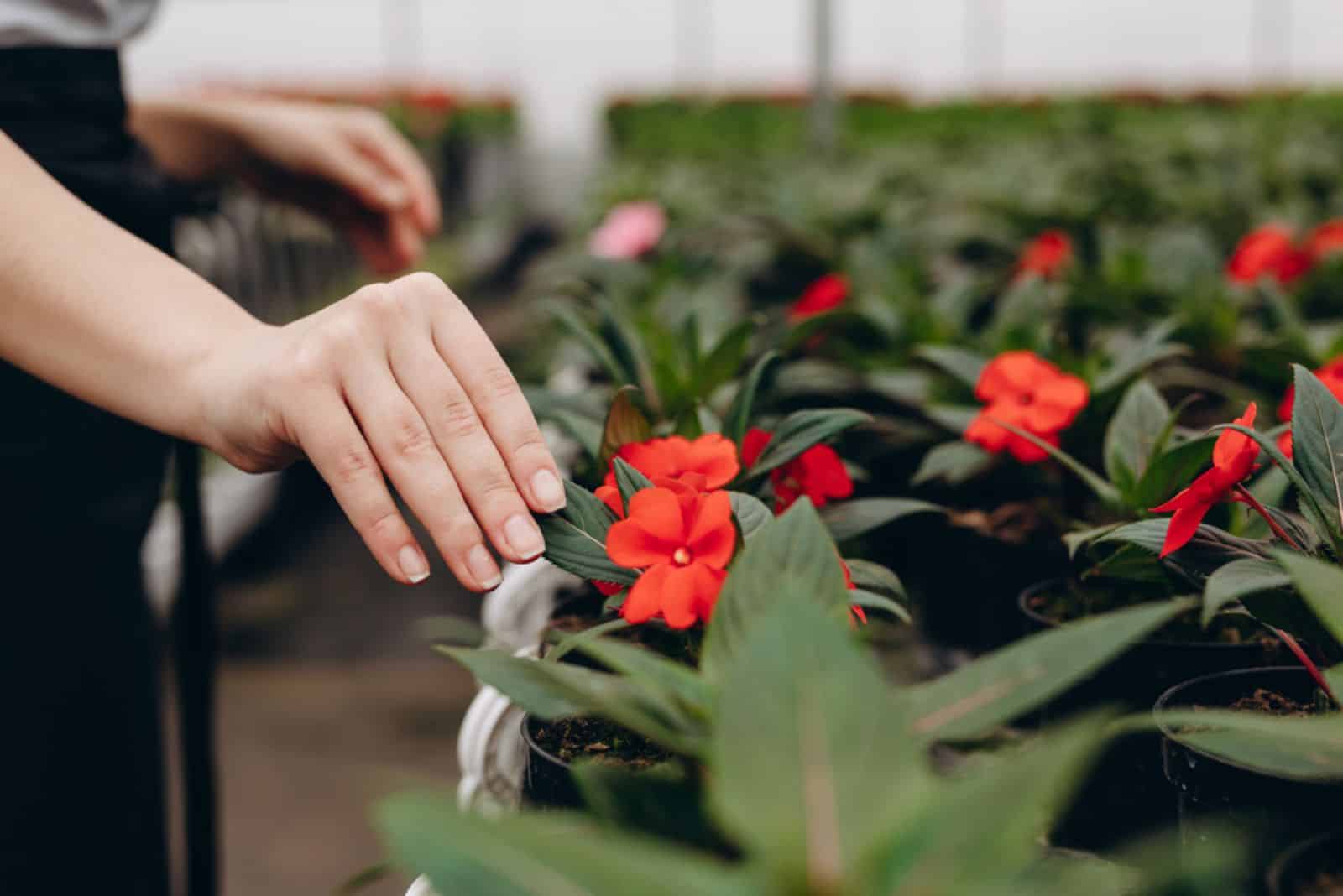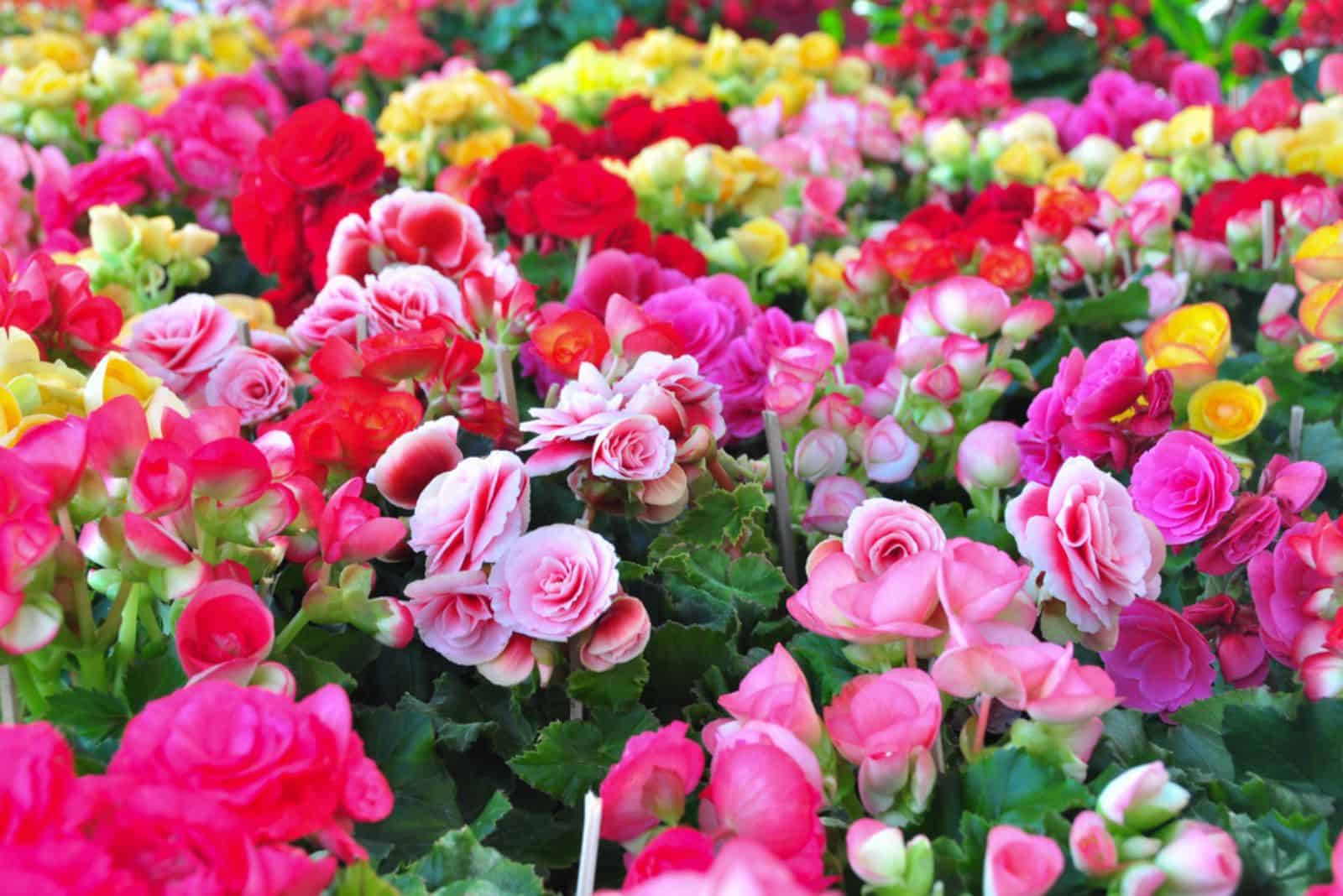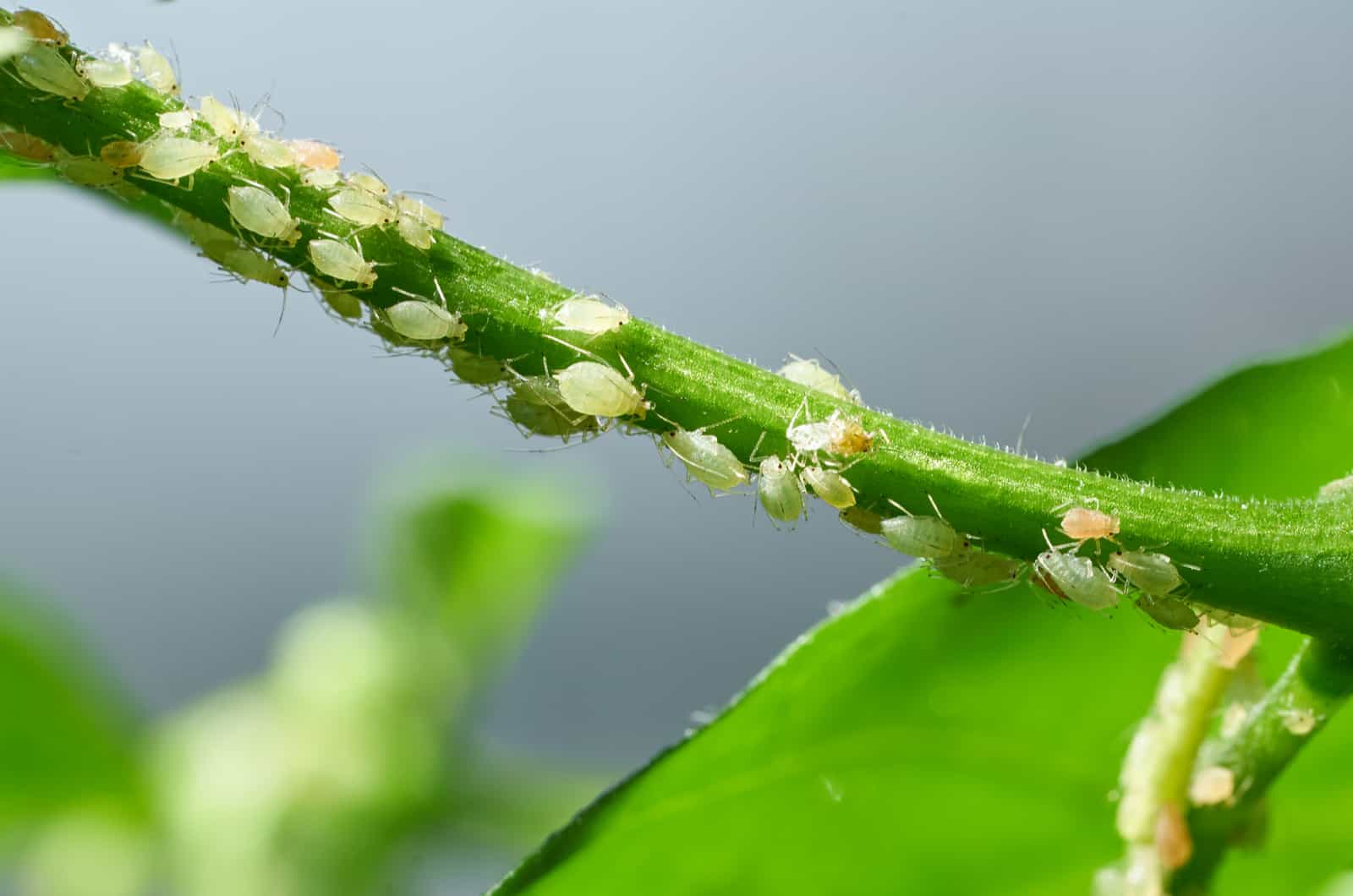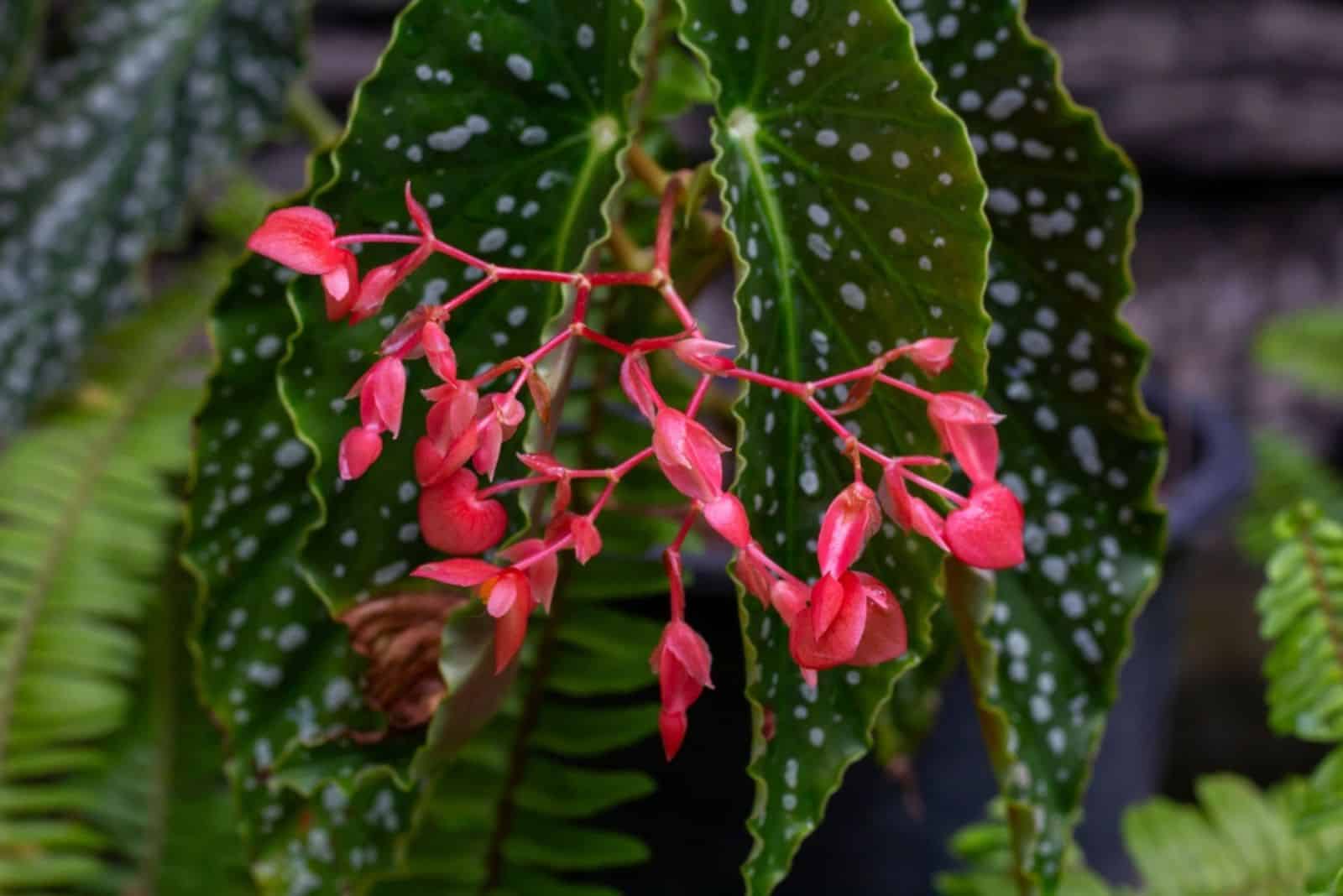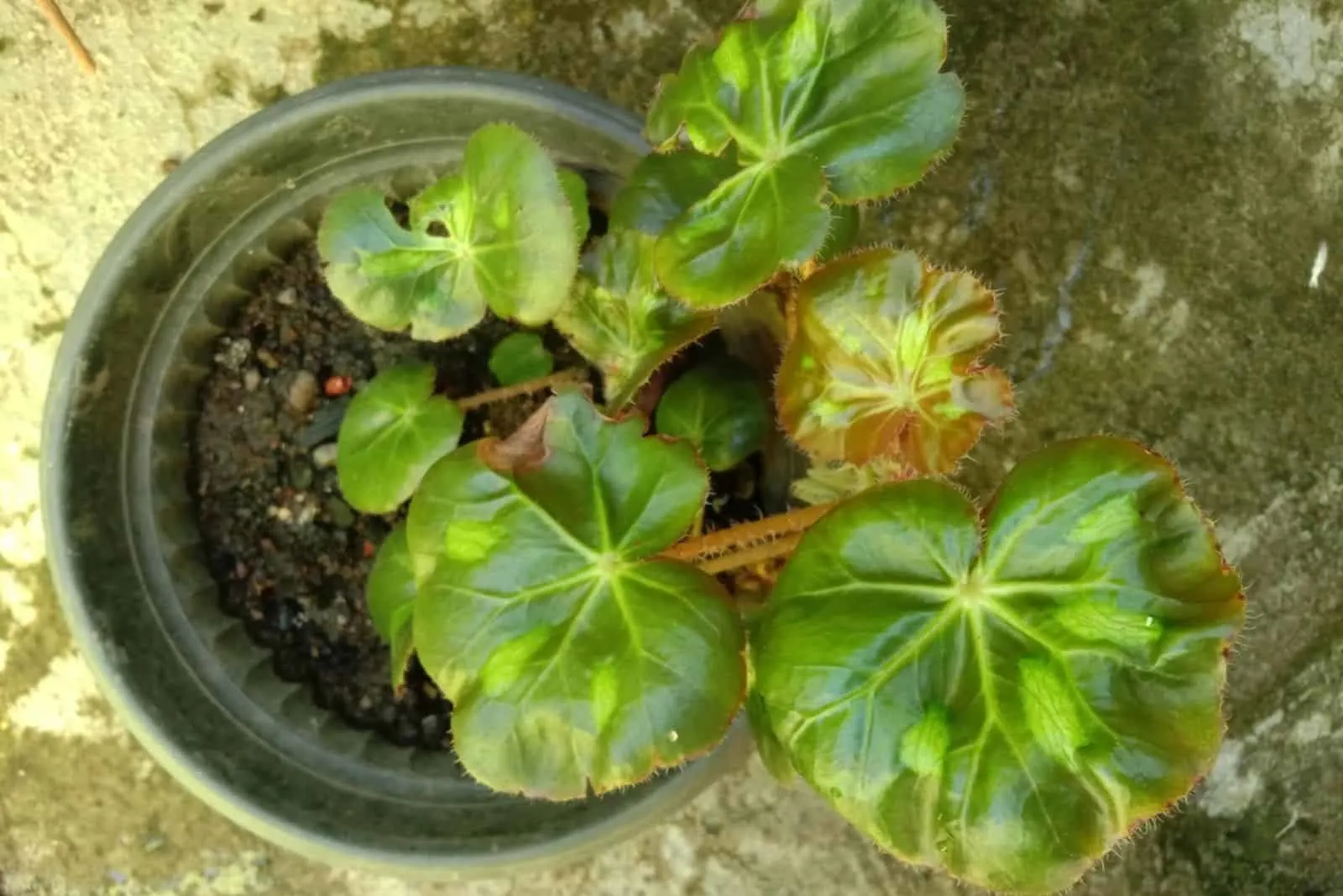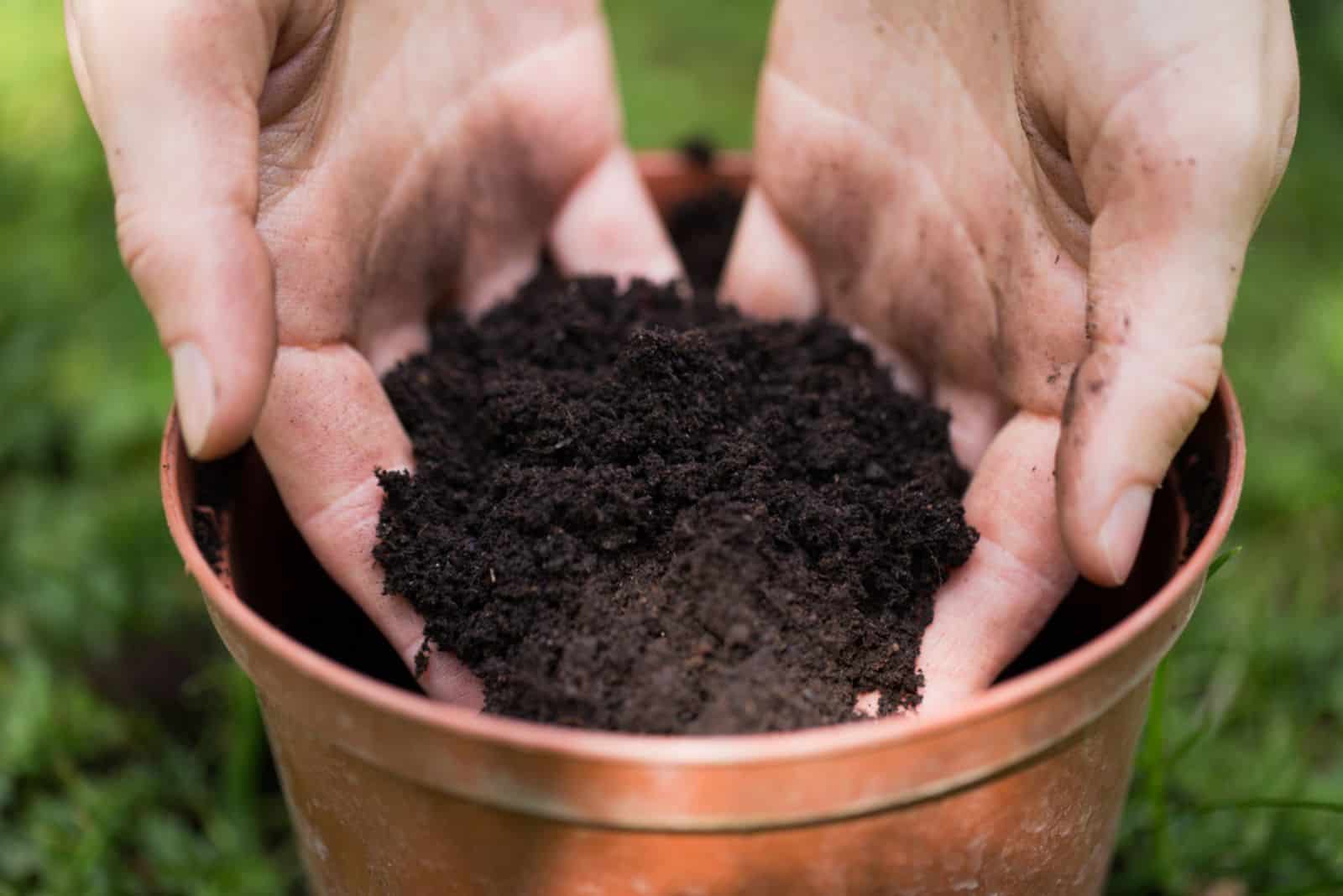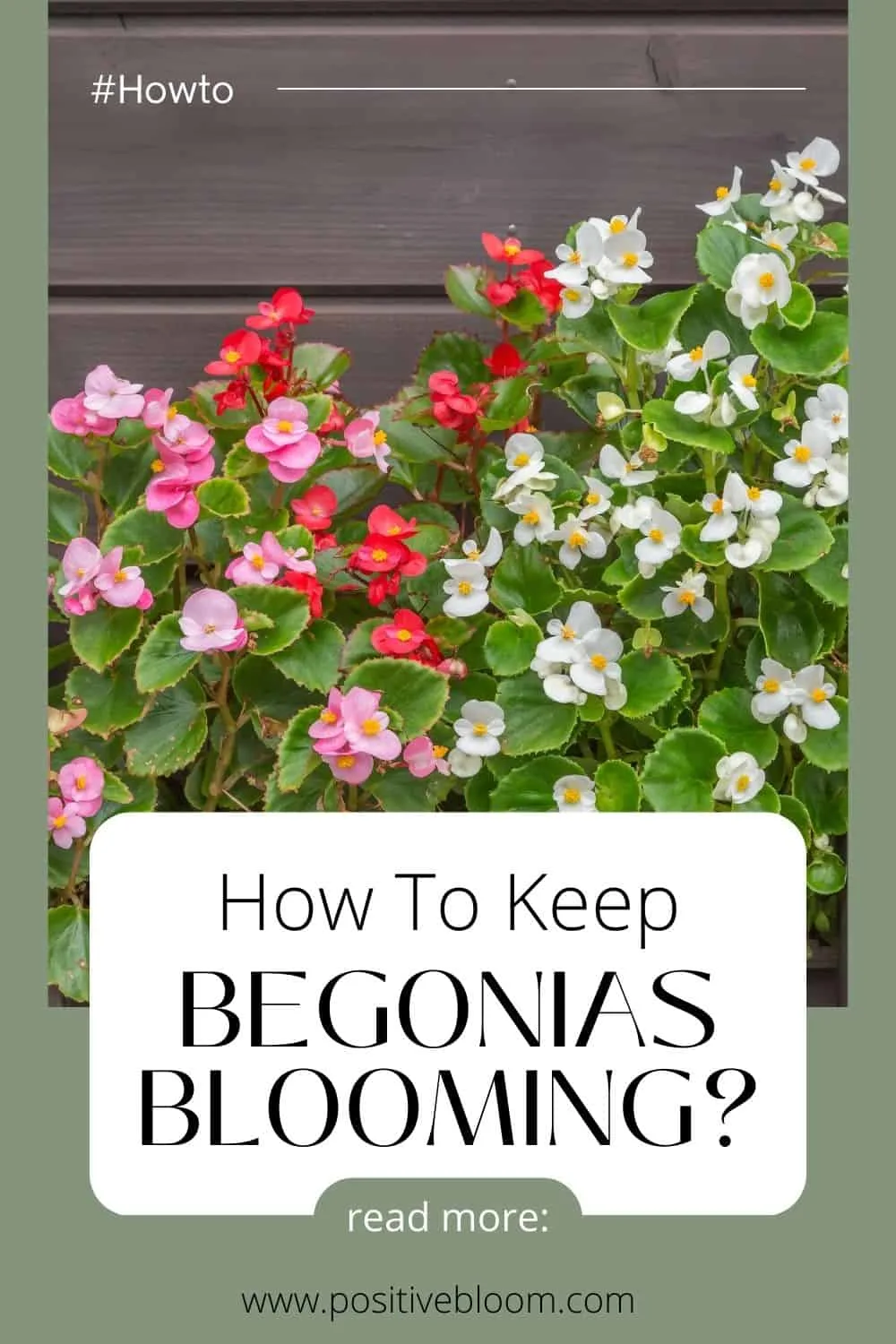Gorgeous Begonia blooms make every flower bed more beautiful! I especially love the appearance of Begonias in containers.
Begonias also make for unique houseplants, and the fact they are super easy to maintain makes them even more attractive.
However, there’s one thing many growers struggle with; keeping Begonias in bloom all summer long.
The good news is that it’s possible to keep these plants in bloom all season long, but you need to ensure adequate growing conditions.
In this article, I’ll teach you how to keep Begonias blooming and show you the best tips for growing healthy and thriving Begonia plants.
I’ll also show you a couple of reasons for delayed or interrupted blooming, and how to fix the issue.
Let’s get started!
How To Keep Begonias Blooming
What do Begonias need to bloom all season long? Bright indirect light, porous and well-drained soil, regular feeding, occasional watering, and deadheading when necessary will ensure a long-lasting flowering season for your Begonias!
Let’s get into details!
Give Your Begonias Enough Light
Begonias are flowering plants, so they need a lot of bright light to produce their unique flowers.
But growers must remember that full sunlight is too intense for their foliage and flowers. So, it would help if you filtered the direct sunlight, i.e., prevent sun rays from reaching the flowers of your Begonias.
Your Begonias will grow perfectly if you expose them to direct morning sun and keep them in partial shade for the rest of the day.
Although some growers claim that Begonias thrive in darkness, I’m afraid I have to disagree, as these plants need light to produce their beautiful flowers. If unsure about the light level, grow Rex Begonias or tuberous Begonias, as they tolerate more shade.
Therefore, you should plant Begonias where they won’t receive full sunlight, but will have enough indirect light.
Water Properly
Irrigation is the trickiest part of Begonia plant care. Soil shouldn’t be overly wet, but also not entirely dry. Both overwatering and underwatering may affect the flowering season of Begonia plants.
Many growers think that if you ensure proper growing conditions, you can water your Begonia by sticking to a fixed schedule.
Unfortunately, this isn’t a good approach. During the Begonia growing season, i.e., spring and summer, the temperatures are higher, so the plant needs more water.
On the other hand, your Begonia won’t need much water during its dormancy period in the winter months. If your Begonia receives a large amount of sun, it’ll need more water.
Keep in mind that while these plants thrive in damp soil, excessive moisture can attract fungi that cause root rot. Additionally, too much water can make the soil compact, which will obstruct air circulation.
Rhizomatous Begonias, such as Begonia beefsteak, can store water in their leaves, which means their water needs are lower than average.
5 Tips For Watering Begonias
Here are some tips that will help you create a perfect watering schedule for your Begonias.
1. Always check the moisture content in the Begonia potting soil. The 2-3 inches below the soil line should be dry before irrigating the plant. Use a moisture meter or a wooden stick to check the soil condition regarding moisture.
2. Water the growing medium surface and avoid wetting the leaves and beautiful blooms.
3. Use rainwater for your plants if possible, as it’s the water type they receive in their natural environment.
4. Pay attention to the time of day when you water your green friends; water your Begonias in the early morning, as midday is the worst time to water plants in general.
5. Water less during winter; no matter how ideal the conditions are for your Begonia, it won’t need a lot of water during winter.
Choose The Correct Potting Mix
Good soil = a healthy plant!
Excess water around Begonia roots will suffocate them, so you need a soil type that drains well. Amend your potting soil with perlite to enhance drainage.
Second, Begonias need porous soil to produce more beautiful blooms. You can amend the potting soil with coarse sand to enhance aeration.
Finally, your plant needs nutrients, so amend the soil with compost or manure. This will also aid water retention, which, when combined with good drainage, can help you get a healthy and happy plant!
All these ingredients will give you a well-draining, well-aerated, and nutrient-rich soil, which is all your Begonia actually needs!
Fertilizing
No matter if you grow Begonias as container plants or plant them directly in a garden bed, they’ll need food.
High-quality liquid fertilizer will ensure the nutrients necessary for your Begonias to thrive and produce an abundance of new blooms.
But you’ll need to be extra careful with the dosage, as too much fertilizer can burn the roots.
Apply fertilizers twice a month for your flowering annuals to grow healthily.
Organic fertilizers have proven to be an excellent option for these plants. I recommend using worm castings to feed your Begonias organically.
Deadhead Your Begonias
Deadheading isn’t obligatory for most Begonia varieties, but it can encourage them to produce new flowers.
Inspect your flower bed regularly, and if you notice any spent flowers, you should deadhead them.
Hold the stem half an inch below the spent bloom, and trim them off.
It’s worth mentioning that Begonias will produce two new stems from trimmed ones after you start deadheading, so you’ll probably need to do it more often.
Ideal Temperatures
The ideal temperature range for the Begonia species is between 50 and 85 degrees Fahrenheit.
The lowest temperature they can withstand is 45 degrees Fahrenheit. Temperatures lower than 50 degrees Fahrenheit might interfere with the biological processes necessary for their development.
They can both stress your precious plants, and cause them to droop and limit their development by slowing down cellular functions.
However, temperatures over 85 degrees Fahrenheit will also have an impact on the condition and appearance of your Begonia.
High temperatures accelerate evaporation, which causes the Begonia plant to lose too much water.
If you live in USDA hardiness zones 10 and 11, you can grow your Begonias as perennials. In colder climates, grow them as flowering annuals or overwinter them indoors.
Prevent Mildew
Powdery mildew seems to love these plants. The problem is that this disease can prevent flowers from growing correctly.
Luckily, powdery mildew can be cured if you start treatment in time. You need to be very careful with this disease and never ignore it because it can kill your Begonias.
Three factors that contribute to the development of this disease are overwatering, too much shade, and poor air circulation.
As you might assume, you can prevent powdery mildew if you ensure ideal conditions, but if it occurs, treat it with sulfur-based fungicides or use neem oil.
Prevent Pests
All Begonia varieties, including Begonia maculata and Angel Wing Begonia, may be affected by pests. This refers to both outdoor and indoor plants,
The most common ones are aphids, spider mites, mealy bugs, snails, and slugs.
There are a couple of DIY methods for treating pests that can help. Neem oil, rubbing alcohol, or a dish soap and water solution can help you eliminate these nuisances. If none of these solutions works, you’ll need to turn to pesticides.
Best Varieties To Grow
As with all other plants, choosing the appropriate variety for your climate can help you keep the plants in bloom all season long. You can select one of the species below or grow some trailing Begonias; both look wonderful!
Let’s look at some of the best Begonia species to grow in your indoor or outdoor garden!
Wax Begonias
These begonias can also be cultivated in full sun, so they are not just limited to shady spots.
You can choose between bronze and green wax begonias; bronze ones tolerate the sun better than green ones.
Compared to other species from this genus, wax varieties are more likely to survive heat and drought, though they still demand nutrient-rich, free-draining, and moist soil.
Here are some of the best cultivars to choose.
1. Prelude: If you want to grow green varieties with more tolerance to high temperatures and high soil moisture content, then Prelude cultivars should be your choice.
2. Cocktail: These are my favorite cultivars, as their flowers come in various colors, and their foliage is bronze. The Whiskey variety produces white flowers, whereas the Rum variety develops white flowers with pinkish-red margins.
3. Ambassador: All Ambassador Begonias produce massive blooms; the plants are compact and their foliage is green.
Hybrid Cultivars
Begonias are really popular and growers constantly seek new varieties. That’s the major reason why there are so many hybrids on the market.
Here are my favorite hybrid Begonias.
1. BabyWing: This lovely cultivar typically reaches up to 15 inches tall and produces beautiful white and pink flowers.
2. Dragon Wing: This is a well-known Begonia hybrid that can reach up to 3 feet tall and produces pink and red blossoms. If provided with the right conditions, the Dragon Wing plant starts producing blossoms in spring and finishes before the first frost.
Angel Wing Begonias
This species makes for lovely houseplants, but also thrive outdoors in partial shade.
It develops clusters of red, pink, or white blossoms, and its foliage is wing-shaped and decorated with white dots.
You can keep this Begonia in bloom all season long if you don’t expose it to full sun.
Tuberous Begonias
These varieties prefer partial shade to direct sunlight, and need a lot of water and food to thrive. However, too much fertilizer or water may cause bud drop, so make sure the soil isn’t soggy and the fertilizer type and dosage are correct.
The flowers of this Begonia species come in various colors, such as red, pink, and orange.
These are the best varieties to grow in hanging baskets, as their vines can reach up to 18 inches long.
Here are some amazing cultivars.
1. Non-stop: Unlike other tuberous Begonias, the blossoms of Non-stop cultivars are small and delicate. These plants can withstand higher temperatures and their flowering season lasts longer.
2. Picotte: The massive flowers of Picotte cultivars have made these plants very desirable to plant collectors all around the world. Lace Red and Sunburns are the most famous Picotte cultivars.
Hardy Varieties
The name Hardy perfectly describes this variety. Unlike most other common Begonias, Hardy ones tolerate lower temperatures and can be grown in hardiness zones 7 and up.
It produces clusters of tiny pink blossoms and, similarly to Angel Wing Begonias, the foliage is wing-shaped.
If you decide to grow this variety, make sure the spacing is suitable, as the plant spreads a lot.
Rex Begonias
Whenever I talk about Begonias and mention Rex Begonias, it seems like everyone has heard of them!
Indeed, they are a very famous plant species mainly grown for foliage.
Many growers prefer to grow these plants in pots indoors.
Here are some of the most popular cultivars.
1. Fireworks: These plants produce silverish foliage with burgundy centers. They typically reach 14 inches tall.
2. Merry Christmas: As you may assume, these varieties have red on them. The foliage is green, red, and asymmetrical.
Why Your Begonia Isn’t Blooming All Season Long
Generally speaking, these plants are super easy to maintain and it isn’t too hard to keep them blooming.
If the flowering season lasts only a short time or is interrupted, here are some of the most common reasons.
Overwatering & Underwatering
All plants from the Begoniaceae family despise soggy soil. This affects not only the flowering season, but also growth and appearance in general.
Some varieties may tolerate drought, but these plants prefer moist soil.
The only solution is to dry out the soil a little bit (2-3 inches) and then irrigate.
Too Much Or Not Enough Light
The light requirements depend on the cultivar. For example, if you grow Angel Wing plants, they won’t thrive in full sun because they prefer partial shade.
On the other hand, cultivars from the Non-stop series can tolerate higher light levels.
Choose the ideal variety based on the spot where you intend to grow the plant.
Wrong Potting Soil
There’s no way your Begonia will keep blooming if its soil isn’t porous and doesn’t contain well-draining ingredients.
No matter the type of roots, they need moisture to thrive but can’t grow in a soggy growing medium.
Heavy soil types will prevent root development, growth, and blooming.
Adding coarse sand and perlite to the growing medium can aid drainage and air circulation.
Additionally, proper spacing can help you overcome the issues with these problems.
Overfertilization & Underfertilization
All plants require nutrients in order to thrive, but Begonias won’t bloom all season long if you add too much fertilizer. You can actually burn the roots if you overfertilize, and instead of producing new flowers, your plant might die.
If your plant lacks nutrients, it simply can’t produce flowers, will struggle to grow, and spend all its nutrients just to stay alive.
Feed your plants with high-quality plant food twice a month, or add worm castings or compost.
Pests & Diseases
I don’t think there’s a plant that can grow and produce flowers if it’s affected by pests or diseases.
Of course, it’s always easier to prevent the problem than to treat it.
You’ll need to pay attention to pest control during flowering. These annoying creatures can not only delay flower production, but also completely stunt growth.
Fungal disease is the worst thing that can happen to a plant, so work on prevention! As soon as you notice your Begonia isn’t producing flowers, has white spots, or the roots are rotting, make sure to determine the issue and fix it before it’s too late!
Wrapping Up
If you’re looking for some plants to add to your flower beds, then Begonias are here to help!
These plants look genuinely unique and their vibrant blossoms make every garden prettier.
One common issue for growers is keeping these plants in bloom.
If you are one of them, and have been wondering how to keep Begonias blooming, now you have the answer.
Choose a suitable variety, ensure enough light, water when the top 2 inches of the well-draining potting medium dry out, feed twice a month, and deadhead when needed.
Believe it or not, it’s that simple to keep your Begonias in bloom!
Until next time!
Like this post? Share or pin it for later!

